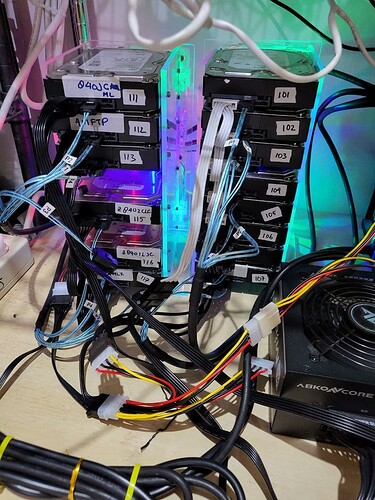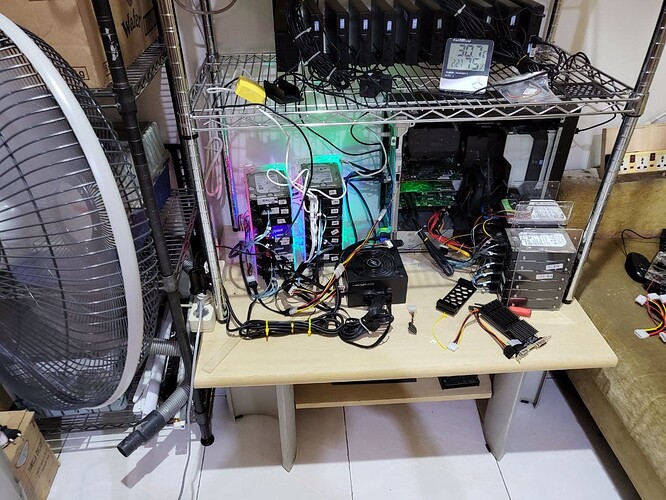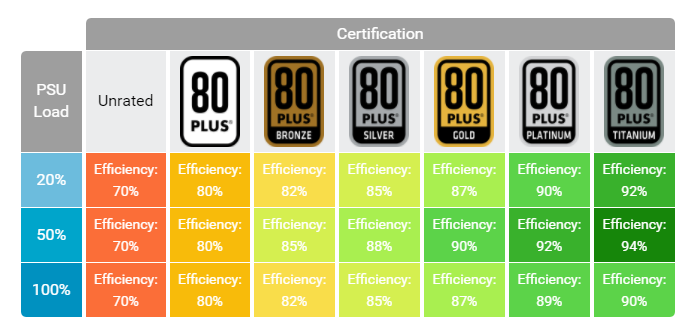In general, that is what Seagate wants you to believe, as they want to keep their quota of rejected RMAs. You need an example, I guess. There is an FTC ruling from 2018 that says that when you purchase a USB drive, you can shuck it, and that doesn’t void any warranty. However, when you ask for RMA for your Seagate drive, the first question is whether you shucked it, and thus your RMA is rejected. Once you quote that FTC ruling, there is a confusion on the other end of the phone line, a quick chat with the supervisor, and puff, your RMA request is good. Another example? With NVMe market heating up, and basically Samsung beating everyone in consumer grade components, suddenly all manufacturers claim the same TBW rates as Samsung. The reason was very simple - virtually no normal installation was anywhere close to hitting even small fractions of those TBW levels. When we started farming, Crucial was the first to introduce changes to their warranty to say that farming chia voids it, plus stating that it will be applied retroactively. So much for their overblown TBW rates.
My previous (two/three) experiences with WD was that I sent them SMART report, and no question asked, those drives were replaced. Of course, once I cooked a couple of drives, when I did my first RAID1 array. They were really yellow, and the label smelled like burned. I didn’t ask for RMA at that time, though 
So, what you stated there is correct, but engineering language doesn’t recognize adjectives  Therefore, we may disagree on what sudden or shock means.
Therefore, we may disagree on what sudden or shock means.
The only time that HD is sensitive to shocks is when they read or write. As soon as that operation is done, heads go to a safe zone that is more or less immune to both sudden and shocks. So, for us (farmers), our drives have heads over platters (reading) when: 1. partials are found, and 2. those partials needs some more digging. Let’s say that #1 takes 5 sec (time allowed to return partial), and #2 takes 30 sec (time allowed to process plot). You can take the number of partials you find per day, and divide that by number of drives (use that 5/30 sec), and you get roughly how many seconds per day your drive is exposed to sudden shocks (my bet is about 5 sec/day or so on average). If you are a member of Flex pool, then you do maybe 5-10x more partials, than any other pool The fact that those drives are 24/7 in ACTIVE/IDLE state really doesn’t matter, as heads are all the time parked.
Vibrations on the other hand are mostly problems for RAID arrays (not JBOD), as every write spans all drives, as such each drive heads potentially move out of sync, etc. Our farms don’t run RAIDs, and if proofs are found, those are usually on one drive only. So, I would really not worry about that.
My take is that unless you put those drives on your grandpa’s subwoofer (remember, he is partially deaf, but still the sudden part is missing here), or carry them on your motorcycle while dragging a very long power cable, they should be fine.
Sure, we should do whatever we can to eliminate whatever is in our power to improve things (e.g., those drives on that picture maybe would benefit from a rubber mat, so a hammer hit in that table would be less sudden). But, we should not get paranoid.
It just smells more and more that Seagate has issues as we kind of pushing the envelope from what they assumed would be a consumer operation (well, then what about Exos drives?).




